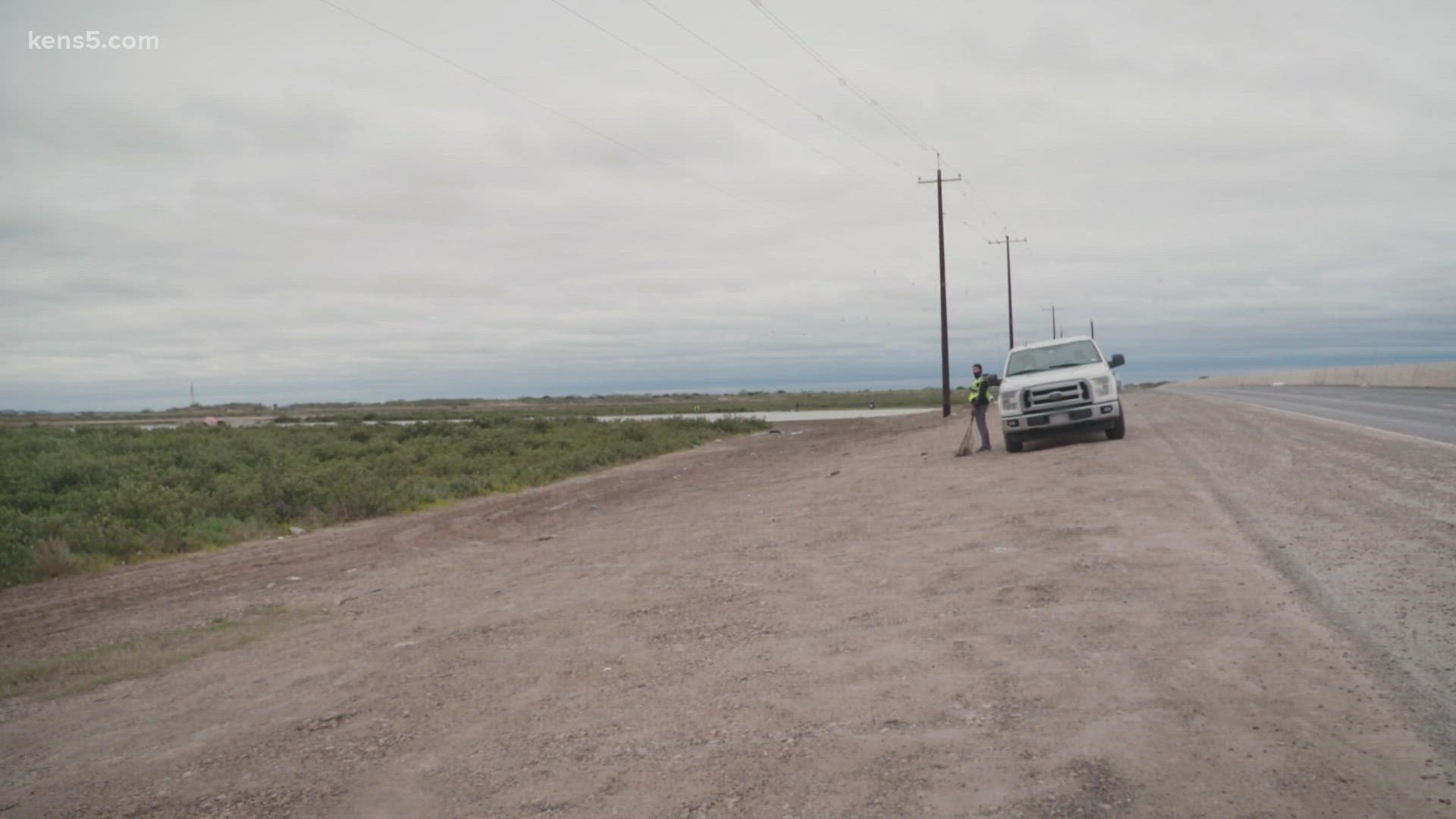CAMERON COUNTY, Texas — It is one thing to have a job where you are required to be out in this cold. It’s quite another to do it voluntarily.
“The temperature is in the 40s today,” said Stephanie Bilodeau Thursday night, as an arctic blast was sweeping through the area. “It seems like the wind is maybe around 25 mph.”
Bilodeau lives in south Texas. For her, the 40s is cold–and preparing to stand outside in this weather for a long time means having to break out everything she has.
“All of our layers, all of the layers that we own,” she said with a smile.
Every time it gets cold and the wind is from a certain direction, Bilodeau comes out to stand on the side of a bridge on state highway 48, the road on the way to South Padre Island.
“The pelicans [are] going down on the highway,” Bilodeau explained. “It really only happens when we have these cold fronts with the associated strong north winds.”
Bilodeau gets paid to be a coastal bird conservation biologist with Coastal Bend Bays & Estuaries Program.
She volunteers to rescue pelicans. To do that, she has to stand on the side of the road every winter. Bilodeau explained that as pelicans approach the bridge from one side to fly to the other end to roost, they sometimes don’t make it.
That’s where the volunteers come in. Bilodeau told KENS 5 there are about 50 on her local email list.
“It's really this highway,” Bilodeau said. “And so, a lot of factors coming together at once. The birds that are flying in, they have to fly directly into that wind. And if the pelicans are flying low enough, they hit that dead air and it makes them just drop out onto the highway. And then, once they're there, they can't get back up. There's no lift. So, they're just sitting ducks at that point.”
Bilodeau said she first heard of that dead-end for the birds about six winters ago.
“It was just crazy to have 75 dead pelicans and we didn't know what was going on,” she said.
The brown pelican used to be on the endangered species list, having been declared endangered in 1970. The population recovered by 2009 and was removed from the list.
“The pelicans have come back from where they were 50 years ago,” Bilodeau said. “Their numbers are not in danger right now, but we don’t need something like this to put them in trouble.”
Over the years, the Texas Department of Transportation funded a number of studies to figure out why this is happening. The agency has also taken several measures since 2015 to combat pelican mortality, including replacing sections of traffic barriers which were determined to cause air-flow issues for the birds.
Between the studies and the work to remedy the issue, TxDOT spent nearly $3 million.“The safety of travelers and wildlife is a priority for TxDOT, and we remain committed to addressing this issue along this stretch of roadway,” said Ray Pedraza, public information officer for TxDOT Pharr District.
The numbers of birds who land on the highway and those that die varies each year and with each storm.
According to TxDOT, in January of 2021, 75 pelicans landed on the road and 19 were killed. During the freeze last February, 140 pelicans were downed and nine were killed.
“The new barrier they put up, it didn’t have quite the effect that they were hoping for,” Bilodeau said. “It seems like it may have solved most of the issue on the westbound lane. It didn’t change the problem in the eastbound lane, so we still have a lot of birds going down on this side.”
Bilodeau said this means she and other volunteers have to come out for every cold front.
“We don’t have to have to do that forever,” she said. “It’s not a long-term fix.”
It does get warmer, though, when one is chasing pelicans on the highway, with adrenalin and all.
“They can be a bit intimidating,” Bilodeau described. “They have a pretty big bill and they will try to snap at you. We have nets, which are helpful, and kind of extends the length of your arm so you can reach out to grab it. When they're trying to bite you, it's pretty easy to just grab the bill and then once you have the bill just got to scoop up the wings in the body. You’re just grabbing whatever you can.”
There’s also the issue of fish vomit.
“Sometimes, if they're coming really close and they know they're about to go down on the road, they'll start vomiting up their fish,” she said. “It makes for not such fun rescuing.”
And yet, she and other volunteers are still here, in the cold, hoping to grab and save a huge bird that may bite them.

